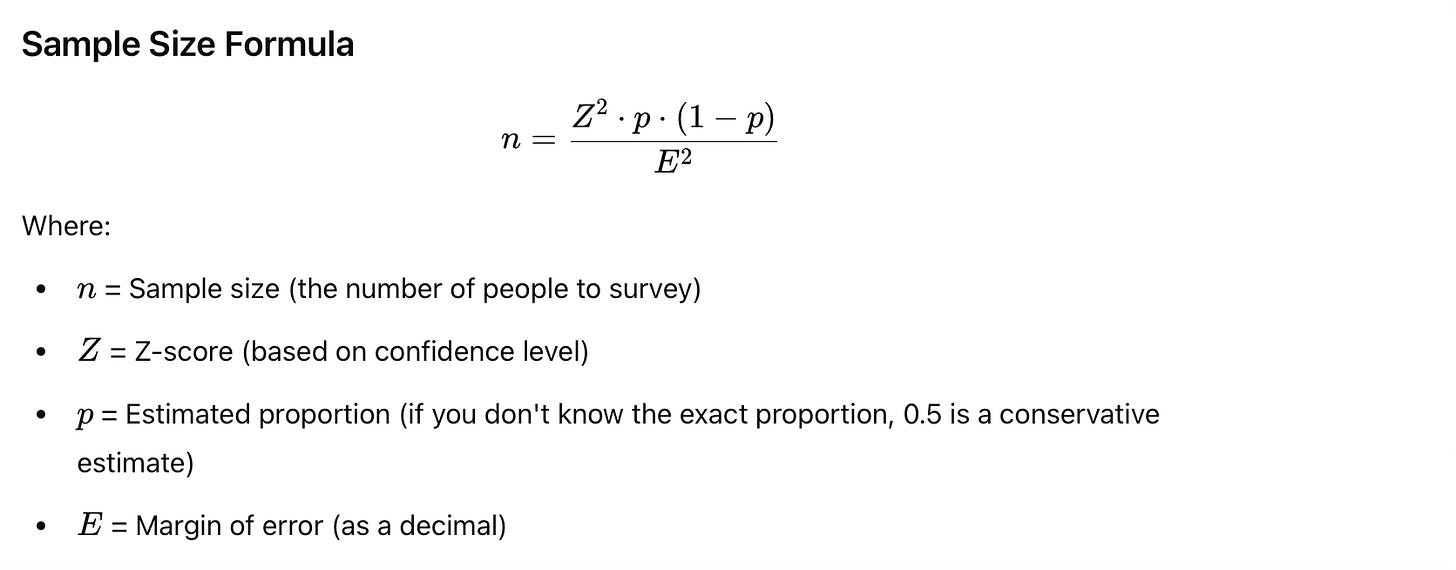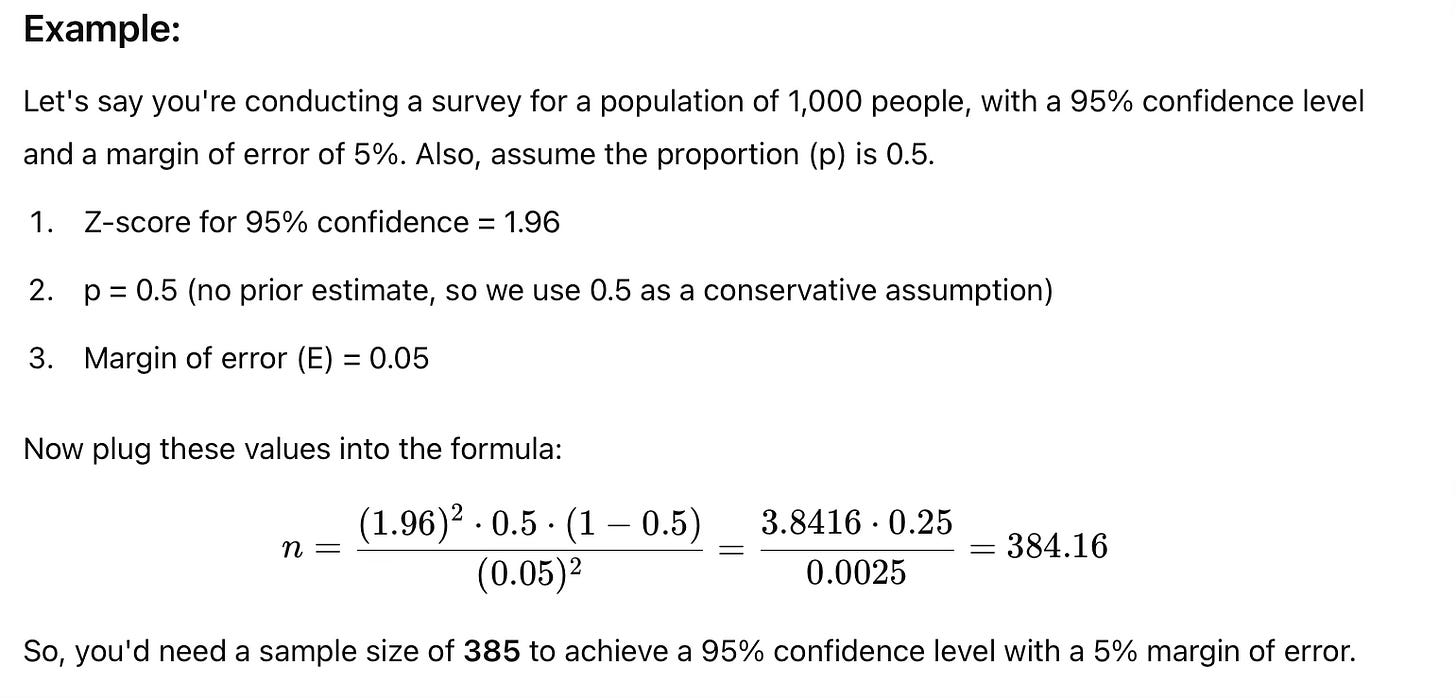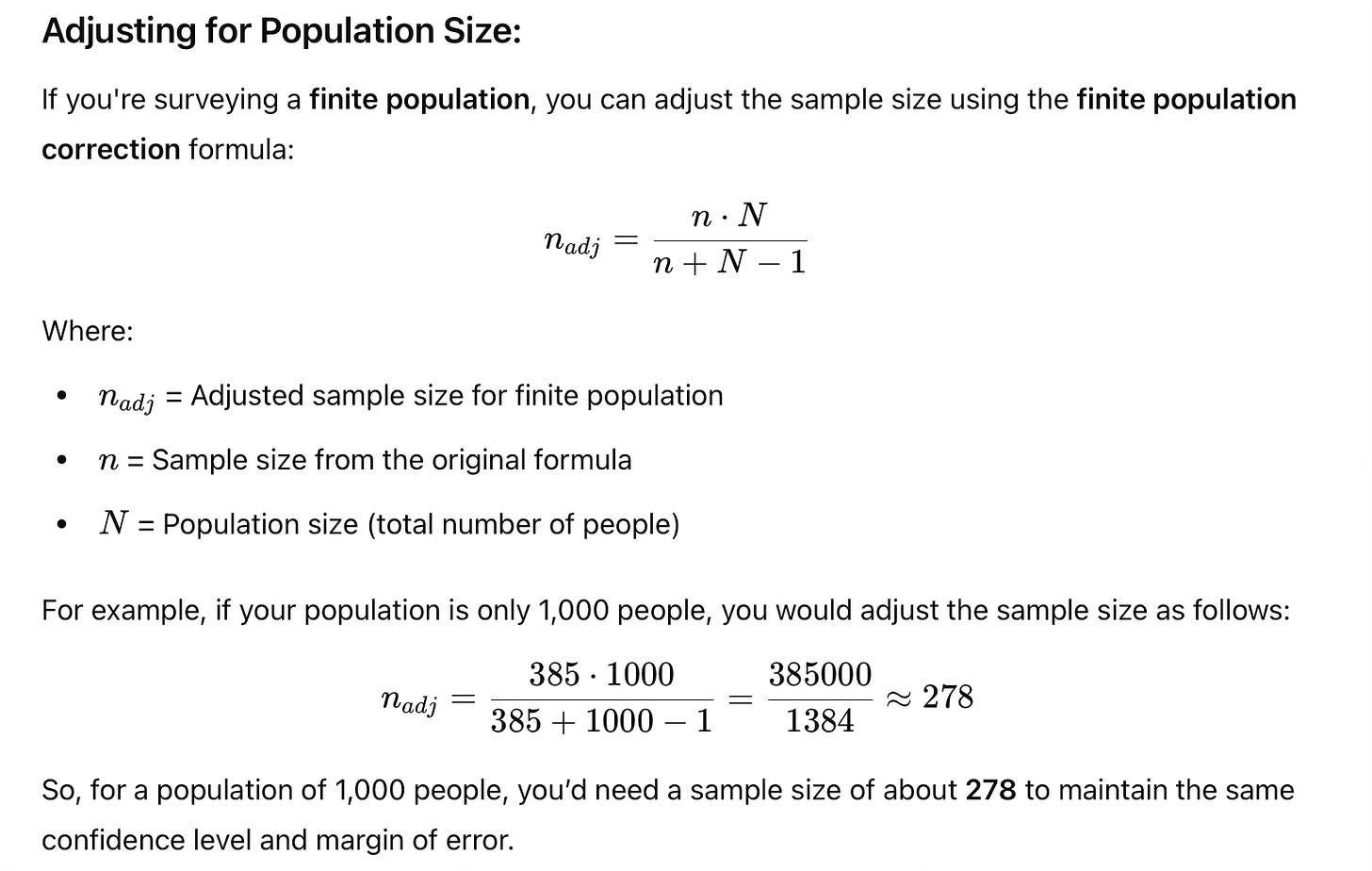Calculate the Right Survey Sample Size
Sample size calculation depends on confidence level, margin of error, and population size.
Determining the correct sample size is not hard; however, you do need to adhere to some basic statistical formulas. A mathematical formula can help determine the appropriate sample size for a market research survey. The formula is based on the desired confidence level, margin of error, and the population size. Here's the general formula to calculate sample size:
Step-by-Step Breakdown:
Z-Score: This represents the confidence level you want for your survey. Common Z-scores are:
90% confidence level → Z = 1.645
95% confidence level → Z = 1.96
99% confidence level → Z = 2.576
Proportion (p): This is your estimated proportion of the population that will answer a certain way. If you don't know this, use 0.5 (which gives the maximum possible sample size, because it assumes the highest variability).
Margin of Error (E): This is the degree of precision you want in your results, usually expressed as a percentage. For example, if you want a margin of error of ±5%, you would use E = 0.05.
Also, don’t forget to adjust for population size as needed.
Key Takeaways:
Confidence level and margin of error are critical factors.
Estimated proportion (p) is typically set to 0.5 if unknown.
The population size can be adjusted for finite populations using the correction formula.
If you're working with a particularly large population (e.g., millions), the population size becomes less important, and you can use the first formula directly without needing to adjust for finite size.
Visit Somediafy.com or connect with the author, Eric Coyle, or if you need marketing research advice.








